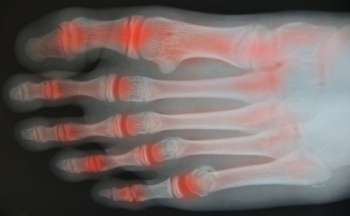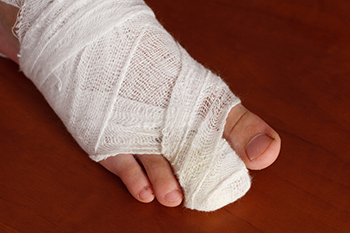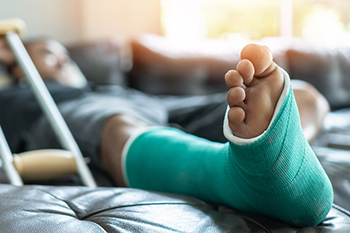
Achilles tendon ruptures are serious injuries often resulting from participating in intense physical activities such as running or sports involving quick turns and stops. If you experience a sharp pain accompanied by a popping sound in the back of your leg, it may indicate a tear in your Achilles tendon. Immediate diagnosis by a podiatrist, done typically through a physical examination and possibly an MRI, is crucial to determine the severity of the tear. Partial tears may require immobilization using a boot or splint, allowing the tendon to naturally heal over the course of approximately six weeks. Complete ruptures, however, often necessitate surgical intervention. Post-injury care includes elevation of the leg and pain medication. If you feel you may have ruptured your Achilles tendon, it is suggested that you make an appointment with a podiatrist for a prompt diagnosis and treatment.
Achilles tendon injuries need immediate attention to avoid future complications. If you have any concerns, contact one of our podiatrists of Westside Podiatry Center, LLP. Our doctors can provide the care you need to keep you pain-free and on your feet.
What Is the Achilles Tendon?
The Achilles tendon is a tendon that connects the lower leg muscles and calf to the heel of the foot. It is the strongest tendon in the human body and is essential for making movement possible. Because this tendon is such an integral part of the body, any injuries to it can create immense difficulties and should immediately be presented to a doctor.
What Are the Symptoms of an Achilles Tendon Injury?
There are various types of injuries that can affect the Achilles tendon. The two most common injuries are Achilles tendinitis and ruptures of the tendon.
Achilles Tendinitis Symptoms
- Inflammation
- Dull to severe pain
- Increased blood flow to the tendon
- Thickening of the tendon
Rupture Symptoms
- Extreme pain and swelling in the foot
- Total immobility
Treatment and Prevention
Achilles tendon injuries are diagnosed by a thorough physical evaluation, which can include an MRI. Treatment involves rest, physical therapy, and in some cases, surgery. However, various preventative measures can be taken to avoid these injuries, such as:
- Thorough stretching of the tendon before and after exercise
- Strengthening exercises like calf raises, squats, leg curls, leg extensions, leg raises, lunges, and leg presses
If you have any questions please feel free to contact one of our offices located in Liverpool, Camillus, Skaneateles, Oswego, and Cicero, NY . We offer the newest diagnostic tools and technology to treat your foot and ankle needs.









